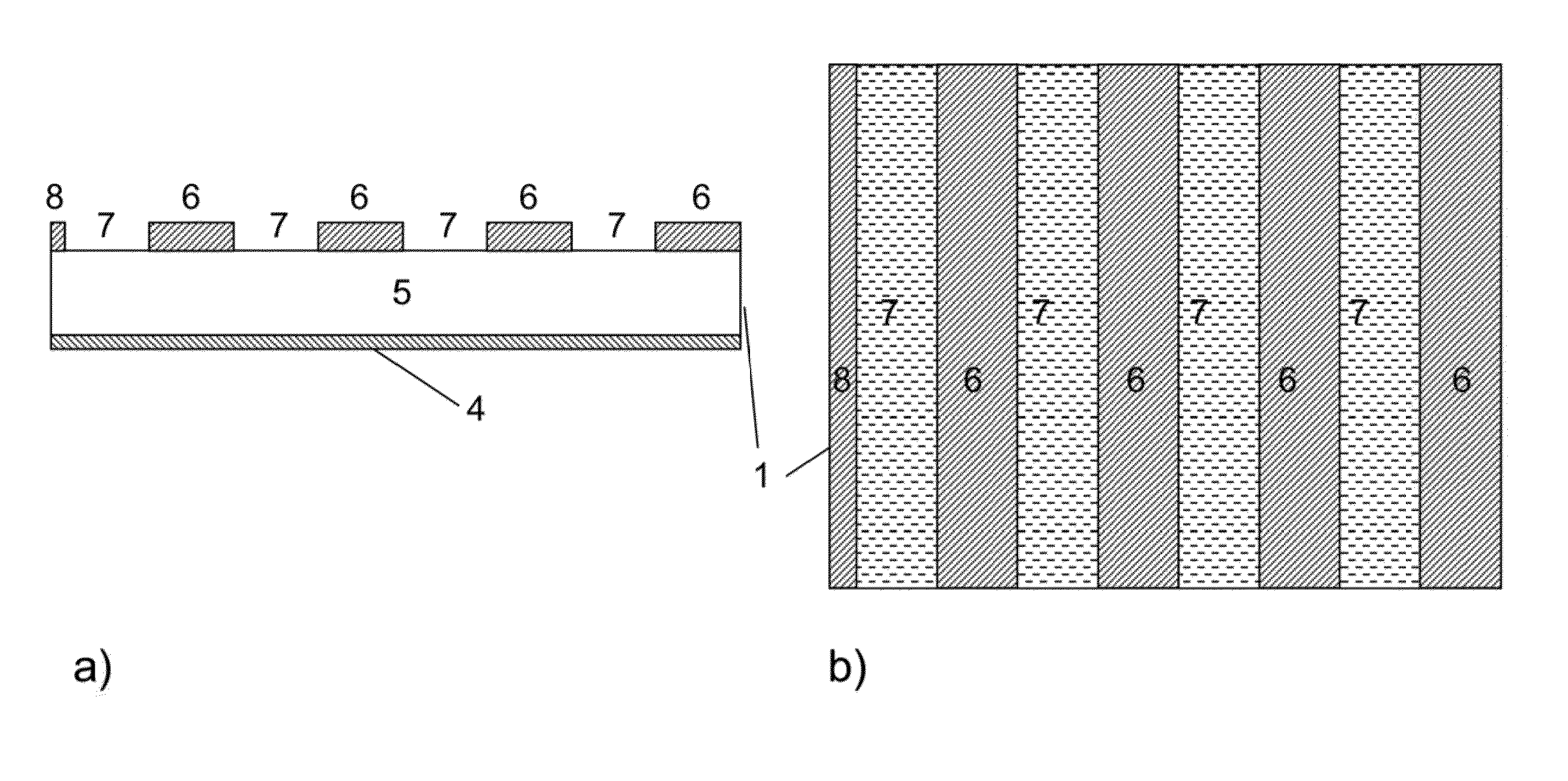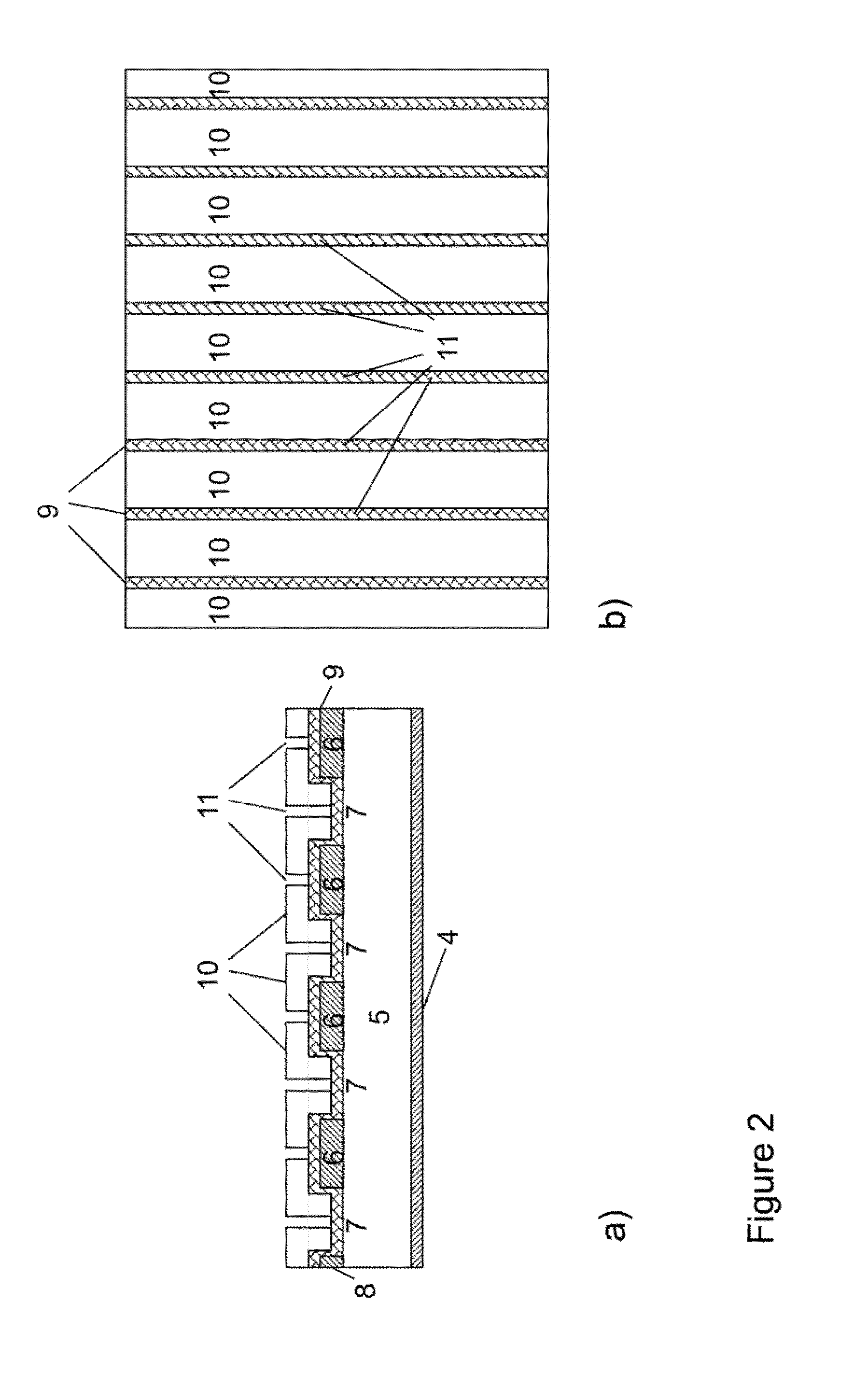Cell and module processing of semiconductor wafers for back-contacted solar photovoltaic module
a solar photovoltaic module and semiconductor technology, applied in semiconductor/solid-state device manufacturing, semiconductor devices, electrical equipment, etc., can solve the problem of low photovoltaic efficiency of solar cells as compared to wafers
- Summary
- Abstract
- Description
- Claims
- Application Information
AI Technical Summary
Benefits of technology
Problems solved by technology
Method used
Image
Examples
first example embodiment
[0108]The first example embodiment employs a set of M solar cells laid out in a rectangular pattern of k columns and 1 rows, i.e. the number n of solar cells in the module becomes n=k·l. The example embodiment is illustrated with k=l=2, but may have any even number n of cells.
[0109]Each solar cell of the module is made from a quadratic silicon wafer of 125 mm in length and width, and which are laminated onto a front module front glass with a gap or relative distance between their respective side edges of approx. 0.2 mm. Each wafer is made by epitaxial growth of three monocrystalline silicon layers onto a porous release layer of a silicon donor wafer. The first epitaxially deposited layer is the emitter layer and is made to be 0.8 μm thick and doped to a concentration of 1·1019 cm−3 of phosphorous atoms (N-type doping), the second epitaxially deposited layer is the base layer and is made to be 40 μm thick and doped to a concentration of 3·1016 cm−3 of boron atoms (P-type doping), whi...
second example embodiment
[0122]The second example embodiment is a variant of the first example embodiment including the following steps:
1. Texturing the front side followed by diffusion with dopant and formation of an anti-reflection coating to front side of wafer. The front surface is optionally diffused or implanted to form a front surface field or floating junction. Front and back diffusions may be of the same type to achieve a floating junction at the front of the cell, or different types such that a p-n junction is formed at the back side of the cell and a front surface field is formed at the front of the cell. The resulting structure is shown in FIG. 8a).
2. Selectively removing regions of the rear-surface emitter by either:[0123]2.1 a) Coating back side of wafers with etch resist (for example Novolac resin), or optionally screen printing patterned resin and skip inkjet (FIG. 8b).[0124]b) Patterning resist using basic solution (inkjet print), optionally screen printing basic solution to pattern resist ...
PUM
 Login to View More
Login to View More Abstract
Description
Claims
Application Information
 Login to View More
Login to View More - R&D
- Intellectual Property
- Life Sciences
- Materials
- Tech Scout
- Unparalleled Data Quality
- Higher Quality Content
- 60% Fewer Hallucinations
Browse by: Latest US Patents, China's latest patents, Technical Efficacy Thesaurus, Application Domain, Technology Topic, Popular Technical Reports.
© 2025 PatSnap. All rights reserved.Legal|Privacy policy|Modern Slavery Act Transparency Statement|Sitemap|About US| Contact US: help@patsnap.com



